The Old Stagecoach Road in Santa Susana Pass State Park is LA's most romantic hiking trail. It comes loaded with history and drama, and offers some of the most breathtaking views in Southern California. This week's June Gloom light showcases our native plants at their spectacular Superbloom peak.
To appreciate the changes in the landscape, resulting from the historic rains we had this winter, check out my previous Views of this place. Many of today's views and plants can be compared with how they looked in previous years and drier seasons.
Along the lower road:
 |
| Valley oaks, Quercus lobata, line the lower road. |
 |
Mosses and lichens on the rock above.
|
 |
Mallow sprays up through the sagebrush, and dangles down
|
 |
| Malacothalmus fasciculatus, chaparral mallow |
 |
While I was framing mallow close-ups, a handsome coyote emerged from the mallow bank and loped on ahead.
Below: Bush monkeyflowers, or sticky monkeyflowers.
Botanists seem to be monkeying with the classification. I learned them (three years ago) as genus Mimulus, species auriantiacus, "golden monkeyflowers." Now it seems they're being classified as genus Diplaca (with Mimulus covering other worldwide strains). [Apparently monkeyflowers are a classic case in plant genetics: and there are over a hundred species in California alone. Who knew?] Imagine: almost at the end of your journey across hundreds of miles of desert, after the 'Devil's slide', looking out the stagecoach window, and seeing Diplaca auriantiacus waving in all its colors: The deep red ones, I think, do get their own species: Diplaca puniceus. What's in a name?
Out of the oak woodland, into the foothill chaparral.
Sagebrush and deerweed, tarweed and yarrow.
with a side of mustard....
|
 Tarweed, Deinandra fasciculata
Tarweed, Deinandra fasciculata
 |
| Golden yarrow, Eryophyllum confertiflorum |
 |
A little higher in elevation, buckwheat comes in. Higher still, the grasslands start...
Leymus triticoides, beardless wild rye, is a chaparral keystone. It likes moisture and salt. I think this is the grass that Isaac Lankershim was referring to, when he told Isaac Van Nuys: wherever this grass grows, the land would support dry wheat farming.
 
Clarkia purpurea, purple Clarkia.
Narrow-leaf milkweed, Asclepias fasicularius. What an awesome, elegant design:

Phacelia cicutaria, var. dispida. Scorpionweed, eight inches long!
Antirrhinum coulterianum, Coulter's snapdragon. This gorgeous flower is endemic to CA. It sends out little tendrils to wrap around neighboring grass-stalks for wind support, as it grows tall.
The next zone is for the magnificent laurel sumacs. |
 |
| Malosma laurina |
On higher crests, the rains have laid spring carpets of 'Turkish rugging.' It's a buckwheat relative.
 |
| Chorizanthe staticoides |
'Texas Star,' rose-gentian, or meadow pinks. These are not native to California, but to Texas and the Gulf Coast. As to how they got naturalized here? Perhaps on the hooves of the team, or in their horse apples, or off the dusty wheels of the Butterfield Stage.







 Tarweed, Deinandra fasciculata
Tarweed, Deinandra fasciculata












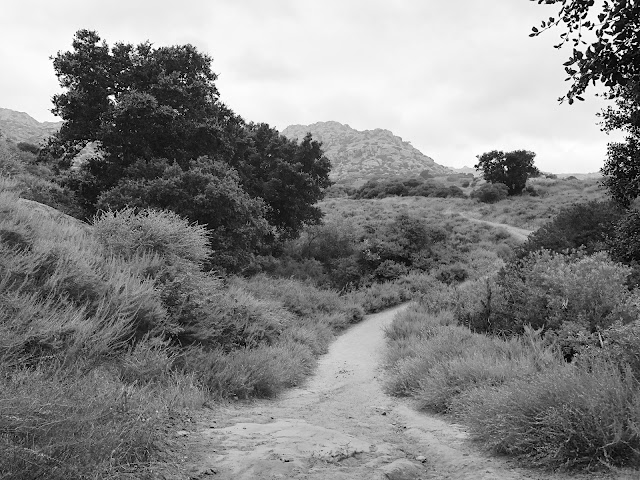
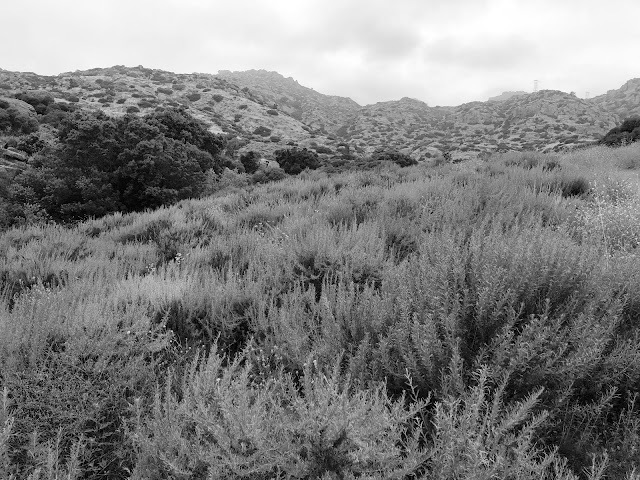
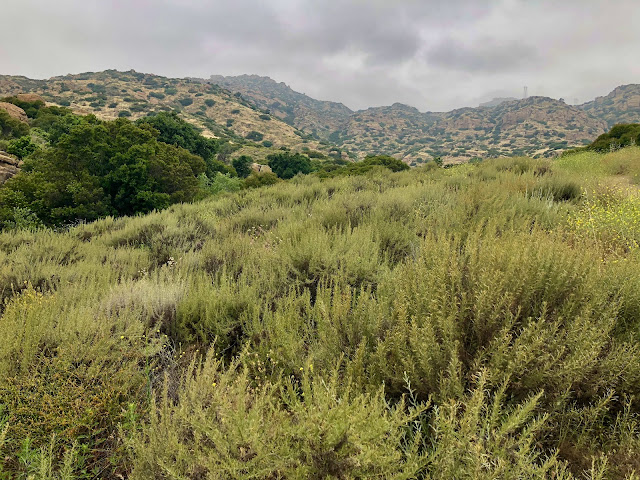


















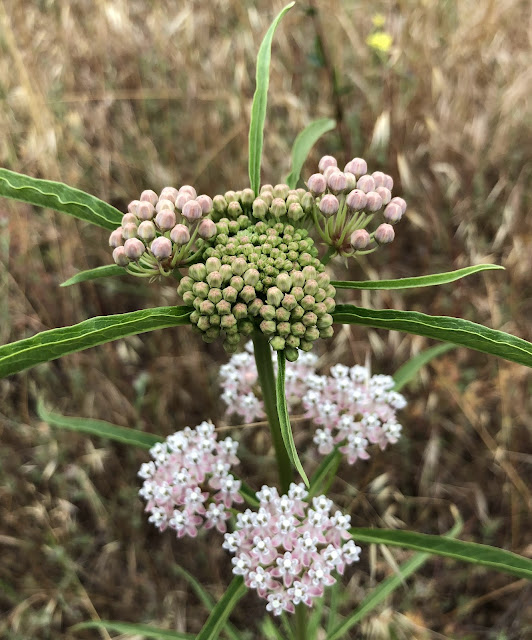













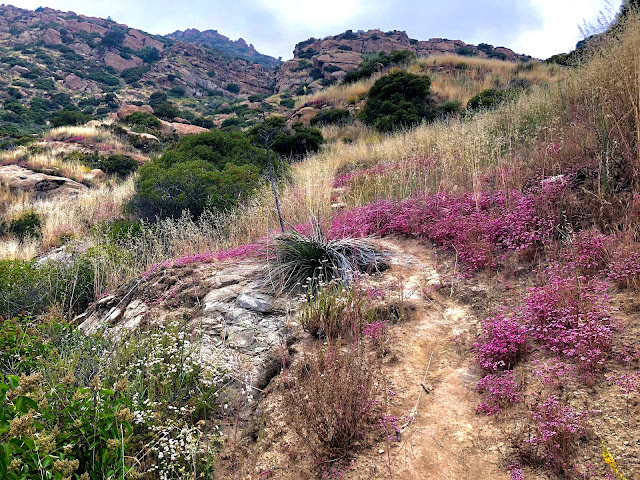











No comments:
Post a Comment